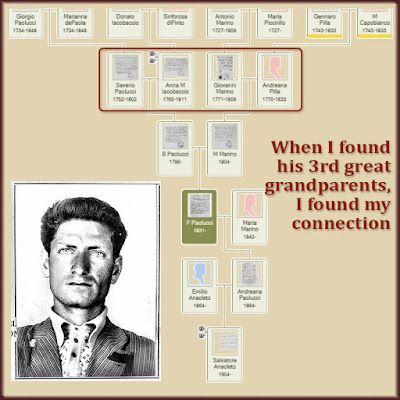Tackle some easier family tree tasks when your head is not in the game.
A lot of my genealogy friends are saying the same thing online. "I can't seem to concentrate. I thought I'd make a lot more progress on my family tree in quarantine."
I'm not having trouble concentrating. I've worked from home since 1991, and I'm as busy with work now as ever.
But I understand what my friends are feeling. Their routines are gone. There's so much to worry about. They'd like to make some real genealogy progress.
Sometimes I want to make genealogy progress, but I don't want to make a big commitment. I may feel tired or have limited time.
That's when I turn to my Quick Genealogy Task List. It's a list of simple family tree tasks that aren't too demanding.
 |
| This is my go-to genealogy task when I'm not ready to devote a lot of time. |
When you're having trouble concentrating, start chipping away at a simple item. Something that doesn't take a lot of mental effort. You may find that once you get going, you'll be eager to knock off another task.
Here are some basic categories of tasks. As you read them, think about your genealogy research. What can you add to your list?
Clean-up Tasks
I'll bet there are a few things about your family tree you'd like to go back and clean up.
- Adding descriptions to your photos
- Standardizing place names
- Weeding out extra people
- Fixing your source citations
I like to think of family tree clean-up tasks as upgrades. I adopted a much better style of citing my sources, and it's a big upgrade. But my tree has more than 23,000 people, so I can't upgrade all my old sources at once.
Instead of fretting about them all, I concentrated on my direct ancestors first. I upgraded all the sources for my 290 direct ancestors.
And I didn't do it in one sitting. That's important when you're having trouble concentrating. Don't put any extra pressure on yourself. This is a project you can come back to at any time. Make note of where you leave off.
It was exciting to finish my direct ancestors' source citations. I felt inspired to start fanning out by working on the citations of all the children of a given set of ancestors.
Organization Tasks
Genealogist love having their stuff organized neatly. Stuff like certificates, family group sheets, binders, and digital files.
Are all your family photos digitized? Are the image files named in a standardized way? Are the filed in a logical way? Are they added to your family tree?
I've been working through hundreds of photos from my late aunt's collection. I'm scanning them and doing some retouching in Photoshop. I've been uploading them to a private Pinterest board that I'm sharing with relatives. I need their help in identifying some of the people and places in the old photos.
 |
| Can't concentrate for long? Divide your genealogy project into smaller increments. |
Scanning may be the easiest, least brain-intensive part of this process. Then comes proper file naming and filing. Followed by archival-quality photo storage boxes for preserving the original photos. I have a plan for that.
Follow-up Tasks
Most of us have been plugging away at this hobby for a long time. Do you have leads that you haven't followed up on yet?
Have you interviewed a relative, but never typed up the transcript? I have. I recorded a conversation with my parents, asking them about their childhood. I still haven't transcribed that digital audio file, and that was 2 years ago.
I also have an old notebook filled with Ellis Island ship manifest entries. It's from my first days of family tree research. I want to follow up on each entry in that notebook. Are they a relative? Do they belong in my family tree? Did I ever put them in there?
And I have my brother's college genealogy paper. I need to completely scrub it for facts and anecdotes he got from Grandpa back in the 1970s.
Finally, I tend to add bookmarks to people in my family tree who have a problem to resolve. Trying to resolve one person's problem can take your mind of this whole doomsday scenario for a while.
Those are a few low-commitment task categories. I'll bet you can come up with more. Spend a few moments starting your list. Add to it whenever something comes to mind. Then turn to your list when time—or your concentration level—is short. And turn to it again and again even after we begin to get back to normal.









